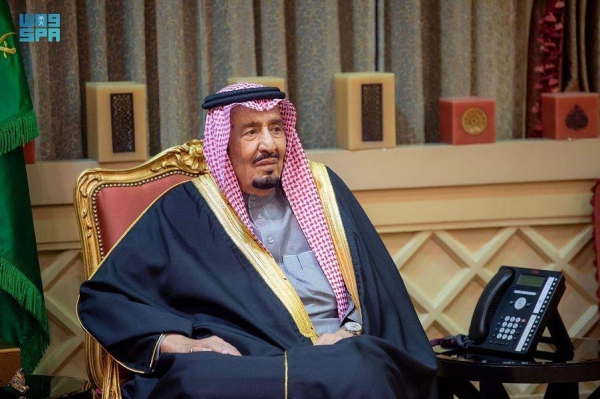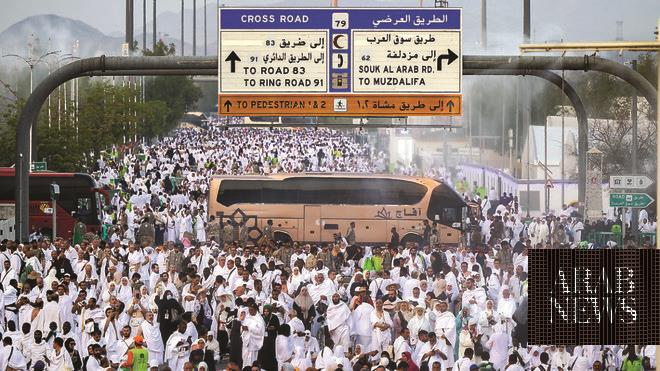
Saudi Arabia places significant emphasis on the Two Holy Mosques, viewing the Hajj season as a key period that showcases its extensive efforts to serve the pilgrims visiting these sacred sites. Ensuring the safety and comfort of the pilgrims, while aiding them in their religious practices, is the top priority for the Kingdom. Saudi Arabia leverages all of its resources, both material and moral, to deliver the highest level of services and amenities for those participating in the pilgrimage.
The Hajj rituals take place in small geographic areas, with large crowds visiting over a short period and following specific jurisprudential guidelines. These factors make securing the Hajj a highly complex and challenging task. For decades, Saudi Arabia has been consistently improving its Hajj management to balance these dimensions while addressing the associated risks to the security and safety of pilgrims. Additionally, efforts are made to mitigate the hardships caused by climatic conditions.
A historical review of Hajj reveals that the establishment of the Saudi state marked a significant turning point in the performance of this religious duty. Since then, security has become a defining feature of Hajj, coinciding with the rapid development of various transport methods. This progress has made it easier for Muslims worldwide to undertake the pilgrimage, leading to a substantial increase in the number of pilgrims. According to the Saudi General Authority for Statistics, more than 2 million pilgrims have participated in 19 separate Hajj seasons over the past 50 years. In the last 25 years, more than 54 million pilgrims have performed Hajj, and about 23 million have done so in the last decade alone. The number of pilgrims is now rising again following a dip during the COVID-19 crisis.
This transformation has placed significant pressure on all levels of service and crowd management. Over the decades, Saudi Arabia has accumulated extensive experience in managing large crowds and has made continuous efforts to improve its systems to accommodate the growing number of Muslims eager to perform Hajj.
The behavior of pilgrims plays a crucial role in maintaining security. Given the massive participation of Muslims from diverse linguistic and cultural backgrounds, organizing their movements is extremely challenging. The presence of unauthorized pilgrims adds further complexity.
To address this, Saudi Arabia collaborates with Islamic countries to manage the number of pilgrims at holy sites. Three decades ago, under the Organization of the Islamic Conference (now the Organization of Islamic Cooperation), the Kingdom agreed on specific quotas for each country based on its population. Additionally, Saudi Arabia has implemented a permit system for domestic pilgrims, both Saudis and residents, and continues to enforce stricter controls on violators from both inside and outside the country. This year alone, security forces have barred more than 300,000 unauthorized individuals from entering Makkah to better control the crowds.
Visitors to the Two Holy Mosques can clearly observe these developments and improvements.
Dr. Mohammed Al-Sulami
The Hajj administration has implemented preventive measures to ensure the safety of pilgrims, such as issuing electronic bracelets and using surveillance cameras to closely monitor their movements. Saudi Arabia’s efforts extend beyond basic security, aiming to enhance the overall well-being of pilgrims by leveraging technological advancements. This approach ensures that pilgrims can perform their rituals in a serene and tranquil environment, achieving the spiritual goals of worship.
Vision 2030, under the Guests of God Service Program that was initiated in 2019, aims to provide the best services and enrich the religious and cultural experience of pilgrims. Notable achievements include the Haramain High Speed Railway and the construction of Mina, the world’s largest tent city, which is equipped with the latest technologies and safety measures. Efforts to increase greenery in ritual areas have also been intensified.
Several electronic strategies have been introduced, such as the Makkah Route Initiative, which streamlines the travel procedures for pilgrims in their home countries, making their arrival at the Grand Mosque easier. This program is being expanded to benefit more countries. Another recent achievement is the application of heat-reducing paint on the asphalt surfaces around the Masjid Al-Namirah to lower temperatures and create a more comfortable climate for pilgrims.
The efforts mentioned above are just a brief overview of the extensive measures Saudi Arabia has taken to serve the Two Holy Mosques, supported by a substantial budget allocation. Visitors to the Two Holy Mosques, particularly those who frequently perform Umrah, can clearly observe these developments and improvements, which are facilitated by streamlined visa processes. They notice significant enhancements in various areas with each visit. However, many voices overlook these achievements and efforts, instead working tirelessly to fabricate issues in the management of Hajj to serve political and ideological agendas that oppose anything Saudi Arabia does, even when it benefits the pilgrims.
• Dr. Mohammed Al-Sulami is the founder and president of the International Institute for Iranian Studies (Rasanah).
X: @mohalsulami
Disclaimer: Views expressed by writers in this section are their own and do not necessarily reflect Arab News" point of view












